Powerful with a gentle touch, the right angle random orbit sander is the go-to for opening grain on a woodworking project or hogging off stock or finishes. Theresa Coleman Clement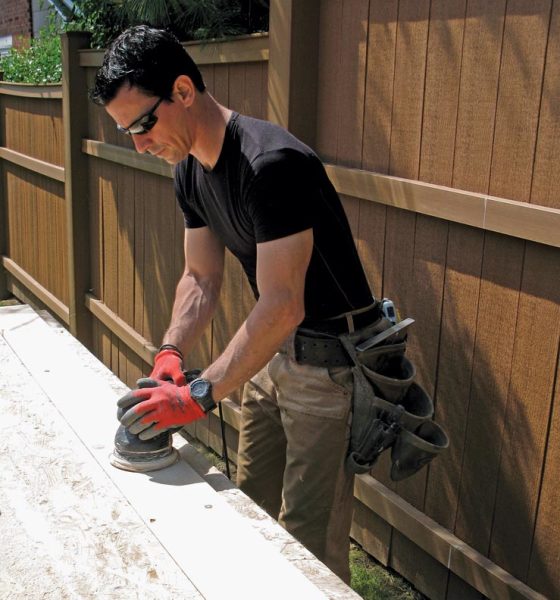
I have a love-hate relationship with sanding. It’s tedious, dusty, and shows progress in agonizingly slow increments. (Who’s inspired now?) However, the tool geek in me loves sanding. It puts you in touch with the work in a way only repetition can. Sanding knocks down saw marks; evens up pieces; removes paint, blemishes, and wood filler; it flushes and feathers drywall and plaster repairs, and opens wood grain to allow a finish to penetrate. It makes whatever you built “look like it grew there,” to quote a woodworker friend of mine.
It’s hard to love sanding, though, if you’re using the wrong tool for the job. Just because a tool is for sale doesn’t mean it works. Here are my 5 go-to tools for sanding everything from new wood to old plaster.
6″ Right Angle Random Orbit Sander
DeWalt’s right angle random orbit sander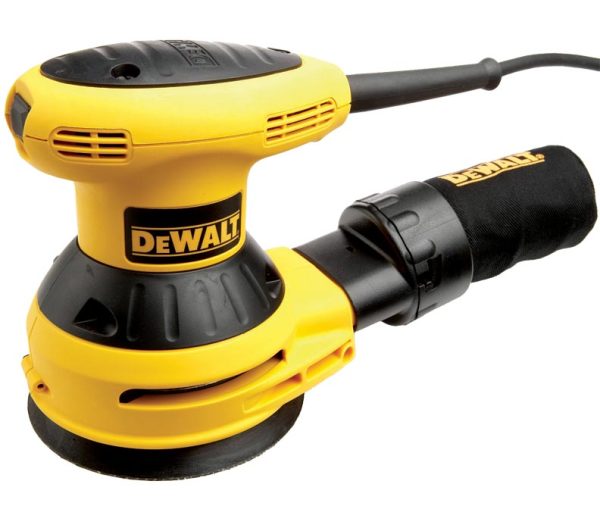
If you have lots of sanding staring you down—anything from stair treads to dented doors, paint prep to glued-up panels—you’ll lose a lot of speed if you don’t own a 6″ right angle random orbit sander. If there’s one tool I reach for more than any other to sand wood or remove finishes, it’s this one.
It’s by no means inexpensive (expect to spend several hundred dollars), but a good right angle sander is worth it. While the 5″ random orbit sander you’ll find crowding the shelves of your local home center works for a lot of tasks, it just doesn’t have the juice to work as accurately and quickly as a larger right angle unit.
More power and versatility—some units feature a wood removal setting and a finer sanding setting—make this tool useful for everything from wood floor repairs to woodworking to sanding hard-to-reach places. Indeed, some have enough power to run a 36-grit floor sanding disc, which could save you from renting floor-specific sanding equipment when refinishing wood floors.
On the gentler side, with a fine-grit disc, the 6″ right angle random orbit sander is adept at prep work, from opening the grain of new lumber to sanding a newly stripped door or the flat parts of unfinished furniture.
Stationary Sander
For small parts—anything from custom shelf brackets to painted-over hinges to small blocks or even art projects (I made a candleholder for my wife out of a knot that fell out of an old Douglas fir joist)—the stationary sander stays still, and you bring the item to it rather than vice versa. You can even sand some curves.
Ryobi’s stationary sander. Theresa Coleman Clement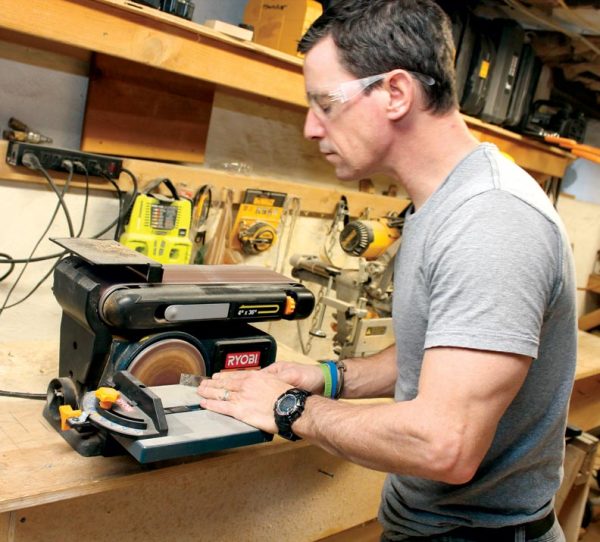
However, my favorite use for the stationary sander is to sharpen stuff. Whether it’s a chisel or a lawn mower blade, it’s easier to get and hold the angle required on a stationary sander than on any sharpening stone or bench grinder I’ve used. It’s usually outfitted with a belt and disc, both of which enable you to see and stabilize the object as you sharpen it.
There are two things to remember when using a stationary sander, which packs quite a bit of power (the 4″ x 24″ belt rotates at 3,450 rpm). First, make sure you have a firm grip on whatever you’re sanding. Second, pay attention to which direction the belt is turning; this will allow you to ease the piece onto the tool and provide the proper resistance. If you’re sharpening a metal item, the disc does like to let sparks fly, so always wear safety glasses and stand so the sparks are shooting away from you.
Fein’s Multimaster oscillating tool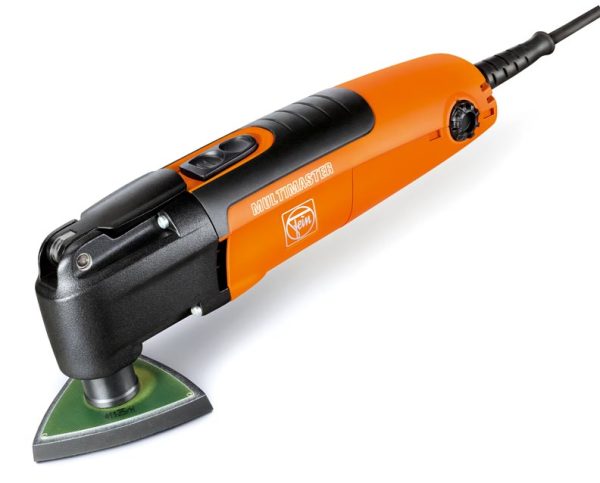
Oscillating Multi-Tool
Tool manufacturers have tried to crack the code for sanding hard-to-reach areas with varying degrees of effectiveness—until oscillating tools hit the market en masse. With low-profile triangular heads, peel-and-stick paper, and super-high vibration speeds, they go where other tools don’t: the nooks and crannies of metal porch railings, around stair balusters, even on wood patio furniture. They’re even ideal for sanding down nail-hole filler on trim projects. Plus, with several interchangeable attachments available, they have many more uses than sanding—they’re also handy for light-duty cutting, scraping, etc.
Angle Grinder
An angle grinder from Porter Cable.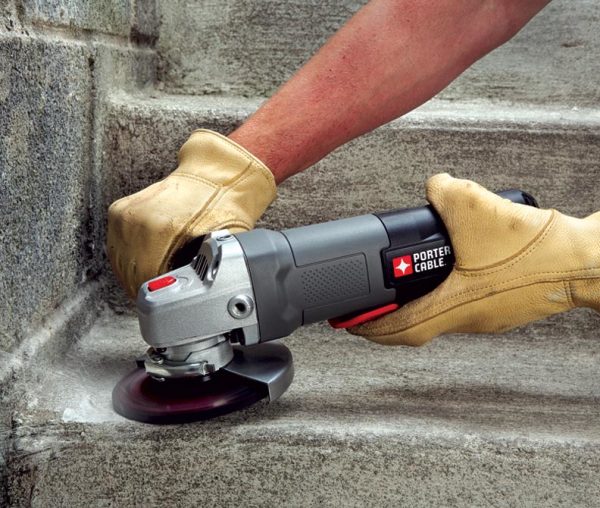
Typically a tool for metal, concrete, and masonry, a 4½” angle grinder is uber-effective at heavy-duty sanding operations. Outfitted with wood sanding wheels, grinders are ideal for quickly removing lots of material. For example, if you damage a subfloor removing the awesome pink tiles the previous homeowner installed, you can effectively sand it smooth again and repair it with cementitious floor leveler so it will accept new flooring. An angle grinder is also the first line of defense in some paint removal projects—say, a metal porch railing—where you can use a wire wheel or flapper to knock the paint off. (For tips on removing old paint safely, see epa.gov/lead.)
Suit up and boot up if using a grinder. At 10,000 rpm, they eject boatloads of dust and are a lot of tool to handle.
Sanding Attachments
Hyde’s dust-free vacuum hand sander attachment.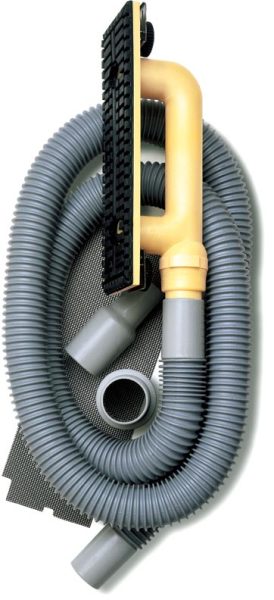
I’d love to claim that I only sand precious, old-growth wood to bring it back to life, but the reality is that a lot of sanding I do is for walls and ceilings—drywall for a kitchen or bath, repairing pocked plaster under a leaky window, feathering out plasterboard dimples, removing remuddled arched door heads.
The key to sanding these types of surfaces effectively (especially in an occupied home) is to be mobile and fast while minimizing cleanup. The best tool I’ve used for this is an inexpensive but well-designed sanding head that attaches to my shop vacuum. Muscle-powered to be sure, this unit has a joint just like a traditional pole sander, and is fast and effective, capturing dust at the source.
For powered sanding (and a lot more money), there are systems that combine a higher-end vacuum (or dust extractor) with a powered sanding head on an extension wand. Power is usually good, but these sanders aren’t right for every project—with areas that require a bit more finesse, like where you’ve applied joint compound, it’s easy to go too far, too fast.
Read more:
- Tested: 6-Inch Random Orbit Sanders Sanding is boring—and a lot of work. Depending on the project, you might be attached to a vibrating, dust-generating machine for hours on end. But it’s so important to success on certain projects—furniture and wood floor repair, paint prep—that once I get started, it becomes (sort of) fun.
- Tool Review: Hand Sander A hand sander is a valuable asset for tasks that demand a lighter touch.
- How to Hand-Scrape Wood Floors Learn a time-honored technique for refinishing floors to a warm, mellow appearance.
- Tool Review: 5-in-1 Tool An indispensable mainstay for old-house restorers, the 5-in-1 tool has more uses than you can count.







